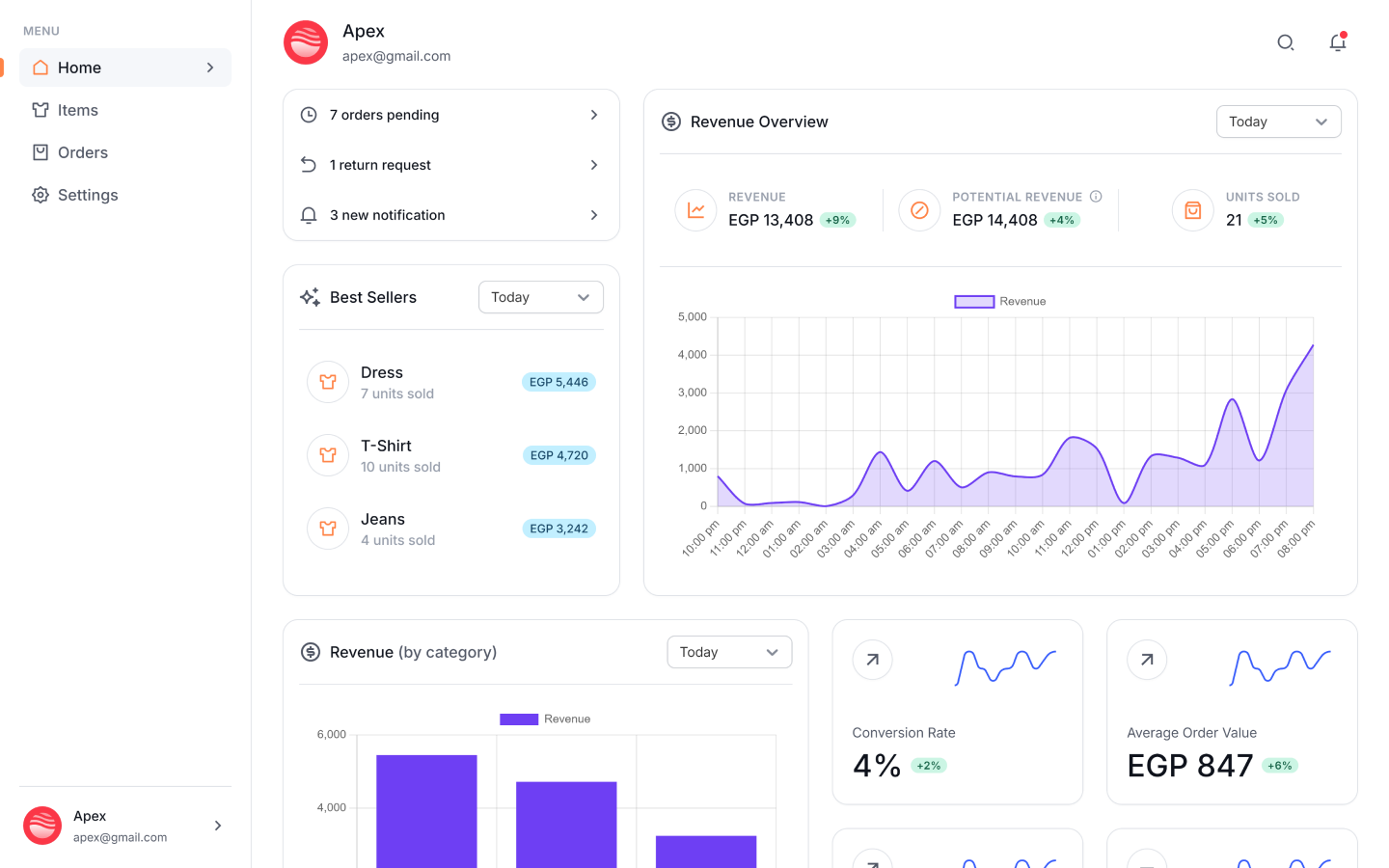Tagged
Tech stack
Next.js, React, PostgreSQL
Duration
Febuary 2024 – May 2024
Project type
Personal
Demo
View appTagged is a clothing e-commerce platform designed to allow customers to buy and sell clothes and accessories from local Egyptian brands. The project was created as a directory to help customers discover new local brands and easily browse products, consolidating the many new and independent brands that each have their own websites into one place.
The Problem
With an increasing number of local brands emerging in Egypt, customers often find it challenging to discover and compare these brands, as each brand maintains its own separate website. Tagged addresses this by hosting multiple local brands in one platform, making it easier for customers to search, compare, and shop across various stores without the need to navigate different websites.
Goals and Objectives
The main goal was to create a user-friendly and visually appealing dashboard for brand owners that is intuitive and easy to use. Additionally, the customer-facing storefront needed to be simple and seamless, ensuring that the shopping and ordering process was not interrupted by unnecessary complexity. As the project evolved, it was split into two sections: a customer side for browsing items and managing orders, and a store dashboard for brand owners to manage their products and track their orders.
Development Process
The development started with designing the UX/UI, ensuring both the dashboard for brand owners and the storefront for customers were clear and easy to navigate. Initially, both sections were designed with two views per part/page, but this approach was soon found to be inefficient. The app was then split into two distinct parts: the customer-facing store and the brand management dashboard, which allowed for more focused design and functionality in each area.

Results
Vibe was completed in two months, but it continues to evolve as new features are added. The project successfully showcases skills in modern web development frameworks and databases, with a strong emphasis on user experience.
Key Features
Some of the most notable features of Tagged include:
- User Registration and Login: Users can create accounts and log in to the platform.
- Item Search and Filtering: A robust search and filtering system allows users to find specific items quickly.
- Unified Shopping Cart: Customers can add items from different stores to one shopping cart and checkout all at once.
- Order Status Tracking: Customers can monitor their order progress from pending to delivered.
- Store Information: Users can view store details, including social media links and performance metrics like average delivery time and return rates.
- Customer Privacy: Stores only see customer addresses when needed for shipping, ensuring privacy.
- Email Notifications: Both users and stores receive email alerts for new orders, order cancellations, and status updates.
- Product Variations: Stores can add items with multiple color and size options, manage stock levels, and link images to product variations.
- Detailed Analytics Dashboard: Stores have access to an analytics dashboard displaying various performance metrics and data visualizations.
Conclusion & Learnings
Building Tagged helped improve my expertise in UX design and multi-part system architecture. Splitting the app into a customer side and store owner dashboard allowed for more flexibility and clarity in feature implementation. Additionally, privacy considerations and handling multi-store operations provided valuable insights into building a secure and efficient e-commerce platform.